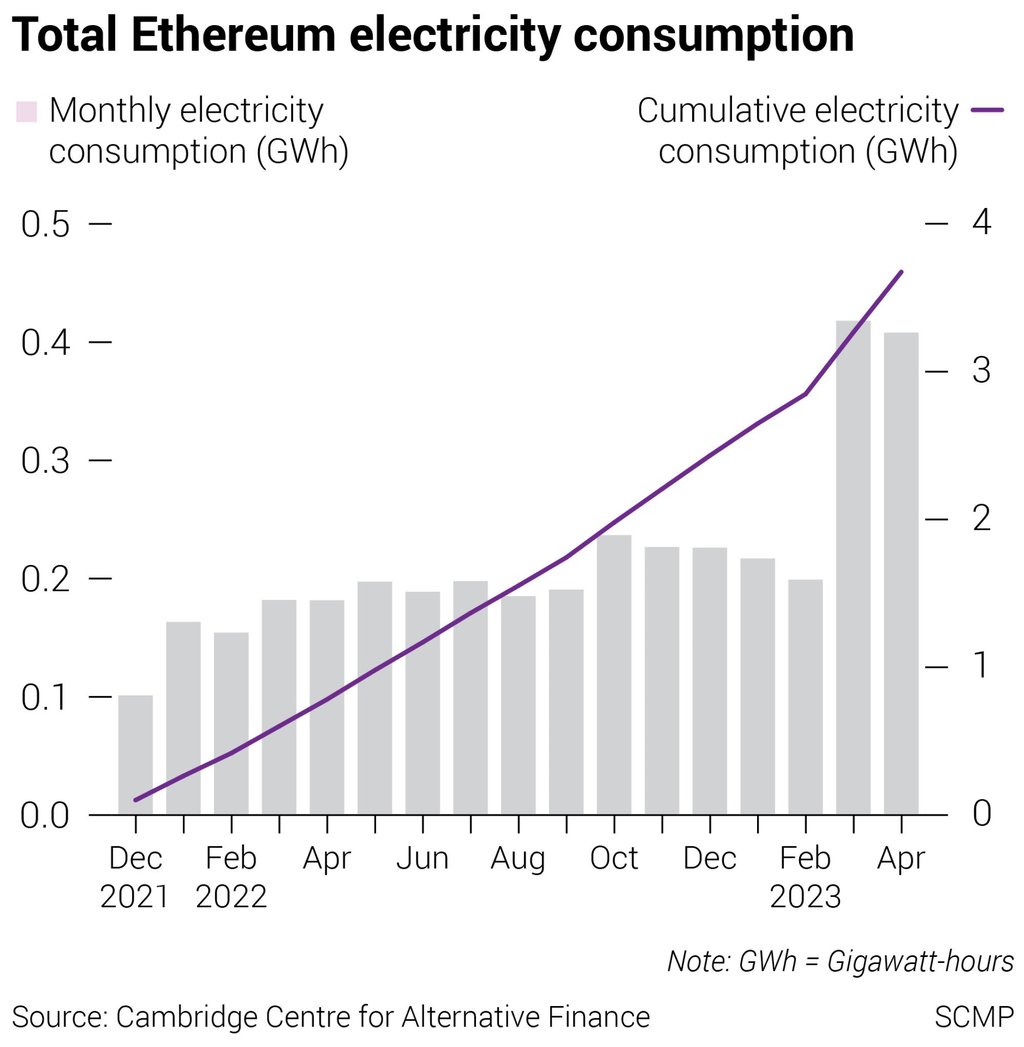Ethereum’s post-Merge energy usage shows how blockchain tech can align with national sustainability goals
- The Cambridge Blockchain Network Sustainability Index shows Ethereum’s annual energy consumption is roughly equal to that of the Eiffel Tower
- Ethereum did not have wide usage in China before it switched to a more sustainable token validation process, the data shows, but interest in the network is rising

The Ethereum blockchain’s energy usage initially plummeted more than 99 per cent last year after a change to its architecture, a new report confirms, showing how a new token minting and validation process better aligns with sustainability goals two years after China’s crackdown on crypto mining.
Following a change from proof-of-work (PoW) to proof-of-stake (PoS) for creating new ether last September, power demand on the network cratered to 235 kilowatts from 2.44 gigawatts, according to the latest Cambridge Blockchain Network Sustainability Index released on Wednesday. Amid rising usage of the network, energy consumption reached 420,000 kilowatt hours in March, the index shows.

Concerns about the energy usage of cryptocurrency mining were widely seen as a potential factor in Beijing’s crackdown.
PoW blockchains like bitcoin’s are so energy intensive because the process requires hashing, or solving increasingly complex math problems, to add new tokens to the network and verify transactions. With PoS, users “stake” their own tokens, or put up a specified amount as collateral, to verify transactions.
Ether’s switch to PoS was teased for years before the stakeholders pushing the change were able to make it stick. The network went through multiple technical changes before the so-called Merge last year, according to the report.